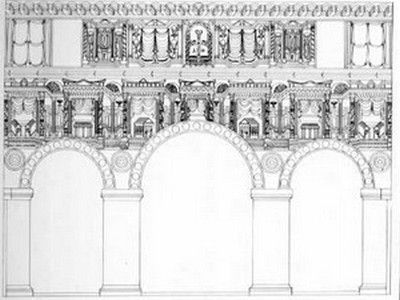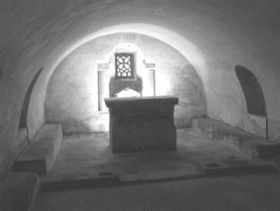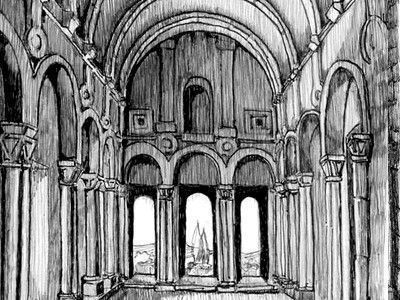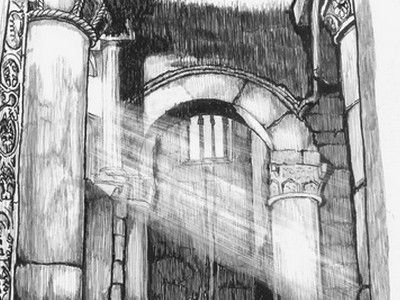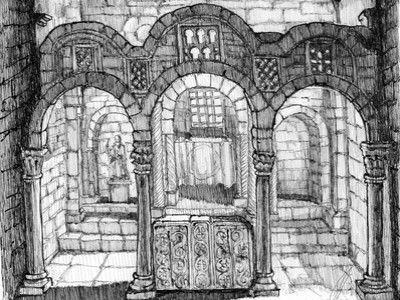The best of Asturian Pre Romanesque
 We propose visiting Santianes de Pravia (ca. 780), the most ancient Asturian church that has been preserved; St. Julián de los Prados and the Holy Chamber of the Cathedral of Oviedo, built in times of Alphonse the Second (791-842); the three Ramirense buildings (842-850). St. María del Naranco, St. Miguel de Lillo and St. Cristina de Lena, and the two most meaningful churches in times of Alphonse the Third (866-910), St. Salvador de Priesca and St. Salvador de Valdediós.
We propose visiting Santianes de Pravia (ca. 780), the most ancient Asturian church that has been preserved; St. Julián de los Prados and the Holy Chamber of the Cathedral of Oviedo, built in times of Alphonse the Second (791-842); the three Ramirense buildings (842-850). St. María del Naranco, St. Miguel de Lillo and St. Cristina de Lena, and the two most meaningful churches in times of Alphonse the Third (866-910), St. Salvador de Priesca and St. Salvador de Valdediós.Hits: 1
Mapa del viaje
Guía del viaje
Día 1
Built around
780 by the king Silo, modified during the 17th and 18th centuries and restored
in the 20th century. It has a basilical plan of three naves and a single
semicircular apse, modified in the 17th century to turn it into a tripartite
chevet with a transept somewhat wider than the naves. Covered with a flat
wooden roof except the apse that was covered with a sinter dome.
Built at one Km far from Oviedo, it has a three nave basilical plan, separated by semicircular arches upon square pillars with wooden saddle roof in the central one. It has a transverse nave, higher than the central one and with the same kind of covering, straight three vaulted apse chevet with a secret chamber upon the central one and a lobby with two lateral chambers. It keeps remnants of paintings of great interest.
It is a martyrdom church formed by two rectangular superimposed naves, the lower one
corresponds to the original construction and it is covered by a barrel vault.
The upper one consisted of a nave plus an apse although the nave was modified
in the 12th century. It is a clear precedent of the structure of St. María del
Naranco.
Día 2
It is a recreational palace formed by two superimposed naves of rectangular plan, both vaulted, with two window galleries, one on each side, in the upper one, that form two rooms in the lower one. Covered with barrel vaults upon bonder arches that correspond to buttresses in the outside and an excellent sculpted decoration in great harmony with the building, meaning a change of style with regard to the previous monuments.
With a three nave basilical plan but in sheer Ramiro style, very diffrent to the ones of the previous period. Only the third part remains as the rest was buried in a landslide in the Middle Ages. It is wholy vaulted with a very complex system. The naves are separated by columns; it keeps a stand upon the portico and a very rich decoration.
It consists of a single rectangular nave that includes the elevated presbitery with an iconostasis of Mozarabic type and a stand, also elevated, at the portico. It has four rectangular annexes: a major chapel, a lobby and two lateral vestries. The whole covered with a barrel vault and buttresses. Decoration from various periods: Visigothic, Ramiro and Mozarabic.
Día 3
Although
it was consecrated in 921, due to its characteristics it is considered to
belong to the period of Alphonse the Third. It has a basilical plan with three
naves with three separated sections by semicircular arches in brick upon square
pillars, with flat tripartite chevet; the central chapel somwehat higher with
enclosed round of arches upon columns with capitals and rest of paintings.
Built by Alphonse the Third for his retirement, it was consecrated in 893. It has a basilical plan with three naves covered by a barrel vault of four sections separated by semicircular arches upon square pillars, with a flat tripartite chevet; the central chapel somewhat higher; a stand over the lobby and the central portico. Windows wth dry cap and rests of paintings inside. It is one of the most interesting buildings in Spanish Pre Romanesque.




